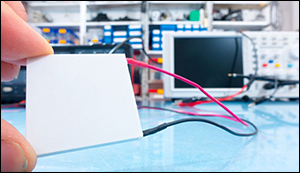Thermoelectric silicon material reaches record-low thermal conductivity
5. 10. 2016 | Phys.org | www.phys.org
Researchers have theoretically demonstrated the lowest rate of heat transfer, or thermal conductivity, in any silicon-based material developed so far.
The new material, which is a polycrystalline silicon nanowire, breaks two limits: the Casimir limit and the amorphous limit. The Casimir limit is a theory that describes the thermal conductivity of nanostructures, and breaking it means that the thermal conductivity of the new material is lower than the value predicted by Casimir limit theory.

The amorphous limit is regarded as the lowest thermal conductivity of a material, since amorphous structures strongly scatter heat carriers. However, due to its unique nanoscale design, the polycrystalline silicon nanowire has a thermal conductivity that is three times lower than that of amorphous silicon materials.
The researchers expect that the new material could be especially useful for thermoelectric applications. By converting heat energy into electricity, thermoelectric materials provide a way to capture some of the waste heat emitted by vehicle tailpipes, power plants, and manufacturing facilities, and then convert the heat into useful energy.
Read more at Phys.org
Image Credit: Adobe Stock
-jk-




